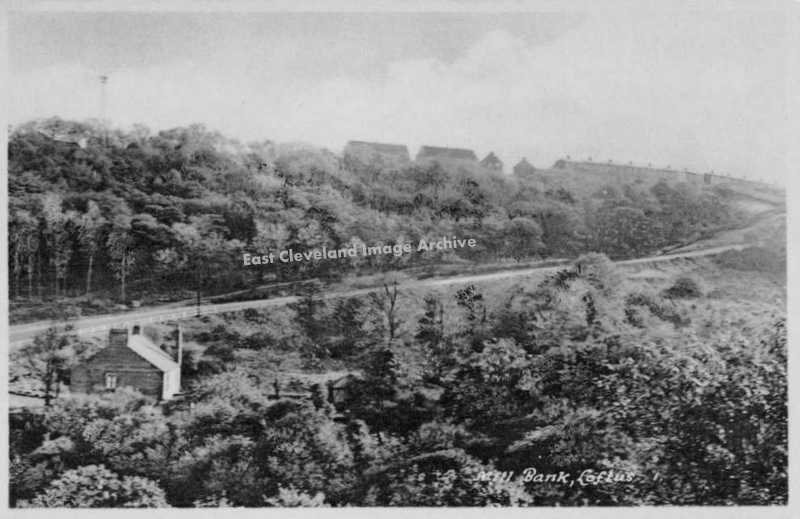
Mill Bank Loftus, above the trees on the left can be seen the tower for the aerial bucket’s system tipping shale from the mine. Whilst to the left in the foreground the end of Whitecliffe Cottages are also visible.
Image courtesy of Maurice Grayson.
|
|
||
 Mill Bank Loftus, above the trees on the left can be seen the tower for the aerial bucket’s system tipping shale from the mine. Whilst to the left in the foreground the end of Whitecliffe Cottages are also visible. Image courtesy of Maurice Grayson. 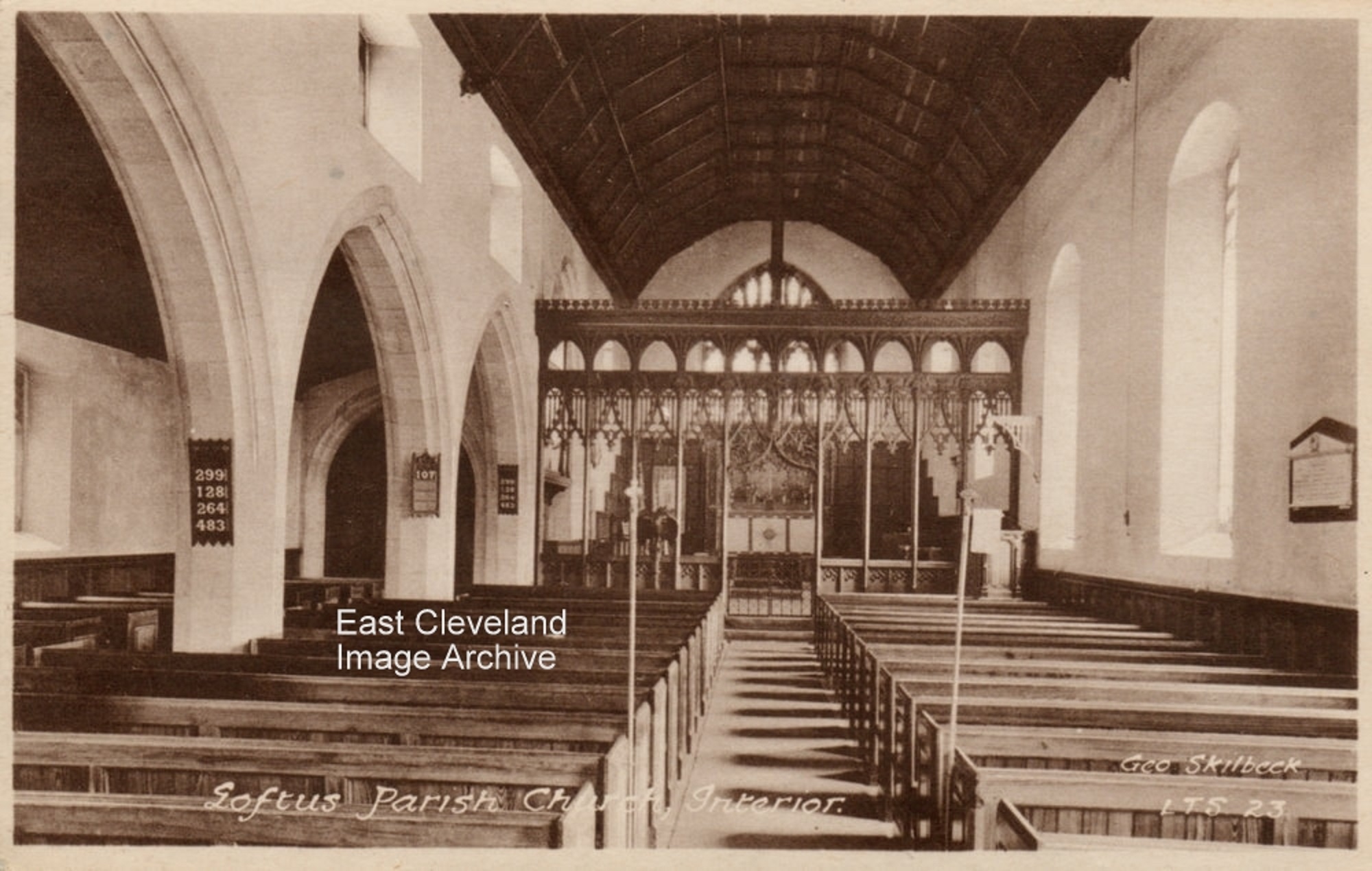 St Leonard’s is the parish church for Loftus. The original ancient edifice dating back to Saxon times was demolished in 1810, described by Rev. Graves “as a dark, mean and humble building.” The new church designed by Ignatius Bonomi, a well known Durham architect who also planned the original Rectory, (this now called Linden House) above Dam end; the hall of Lord Dundas in the Hall Grounds is also much in his style. The church was again enlarged around 1900, with the addition of a north aisle. The fine carved rood screen and rood cross, divide the nave from the chancel. Image (from a Skilbeck postcard) courtesy Maurice Grayson; detail courtesy of Nicholas Pevsner “Yorkshire- the North Riding”. 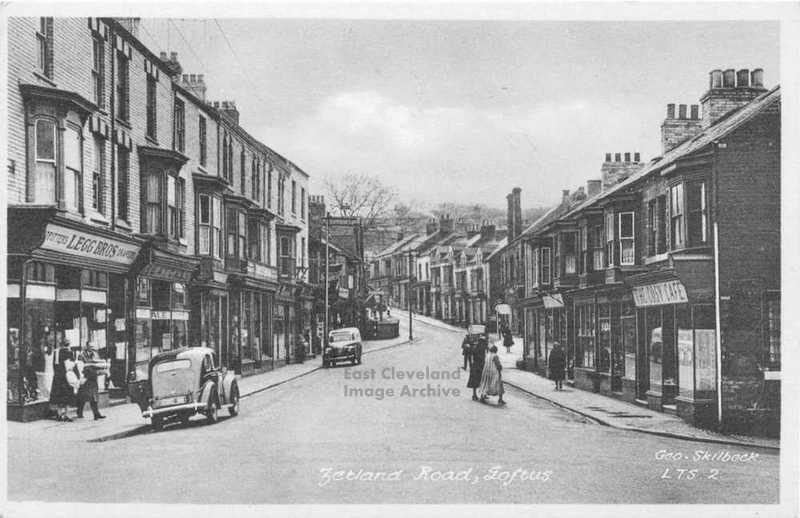 Zetland Road Loftus 1950’s. A stark contrast to the present day, every shop on both sides of the street and further up Zetland Road were a thriving business. Possibly only Bramwell’s (formally Halton’s) are still in the same trade on the same premises. A Skillbeck postcard courtesy of Maurice Grayson. 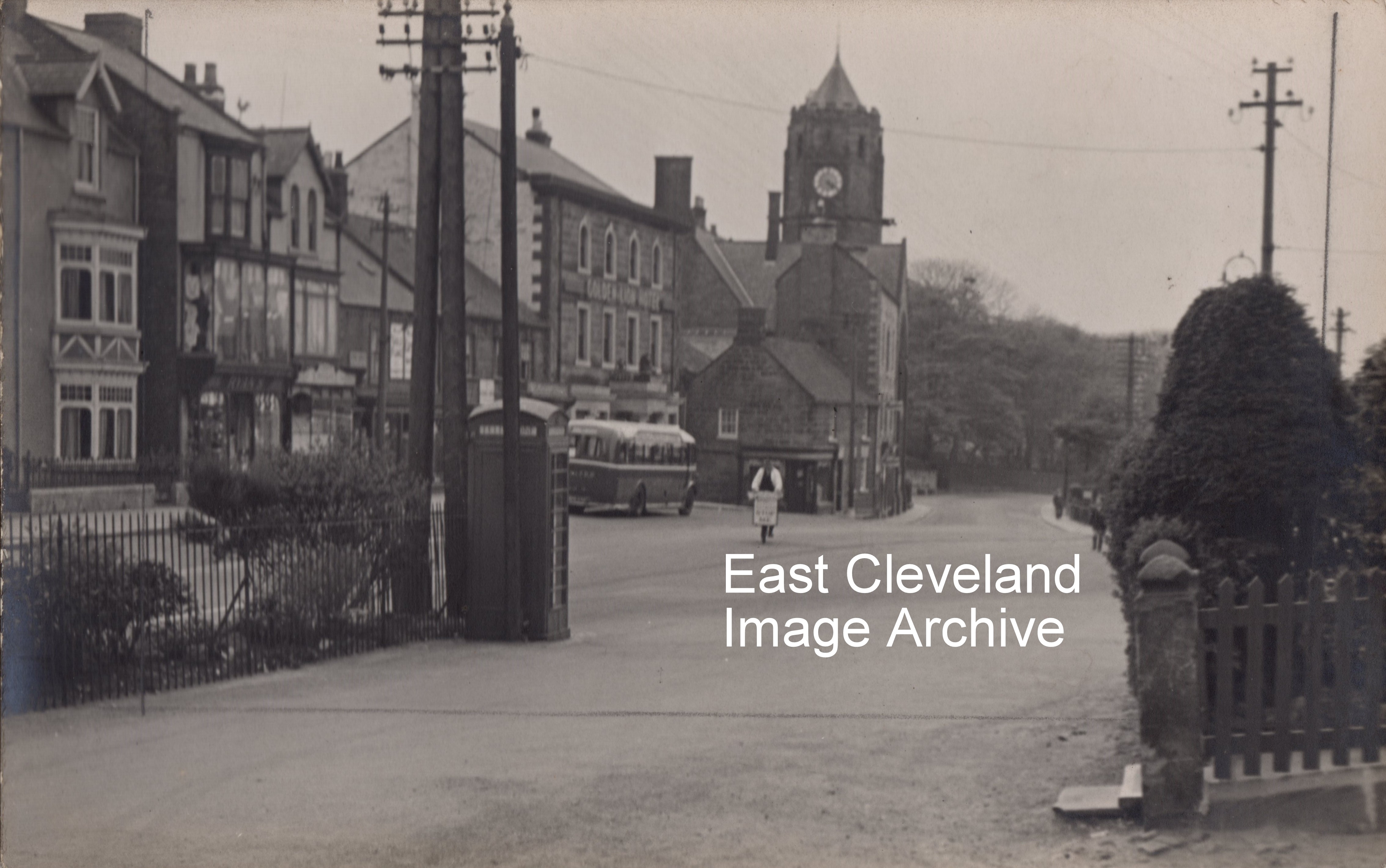 Market Place Loftus sometime in the 1930s; this based on the presence of Cammell’s and Race’s shops where post 1938 was the Regal cinema. A United bus waits at the stop near the Golden Lion Hotel; Parrot’s ironmongers (now the Post Office) is in front of the bus. Is it the Co-op Delivery on the bicycle? Image courtesy of the Basil Webster Collection. 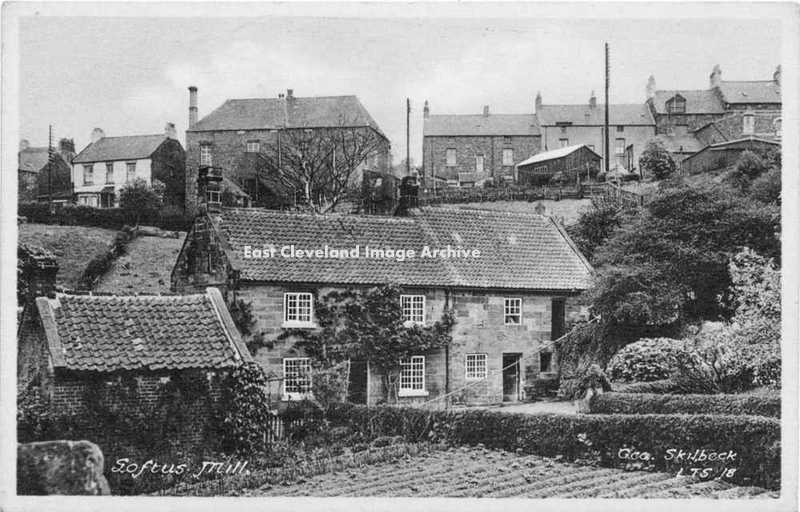 Loftus water mill on Gaskell Lane; there has been a mill on this site since medieval times. The water to power the mill came from a pond above the waterfall along a leat to a second pond and then along a second leat to the waterwheel believed to be an overshot wheel, the most efficient type. Most of the machinery is still in situ, by courtesy of the present owner. An historic part of Loftus deserving of preservation, this image is from a George Skilbeck postcard. Image courtesy of Maurice Grayson. 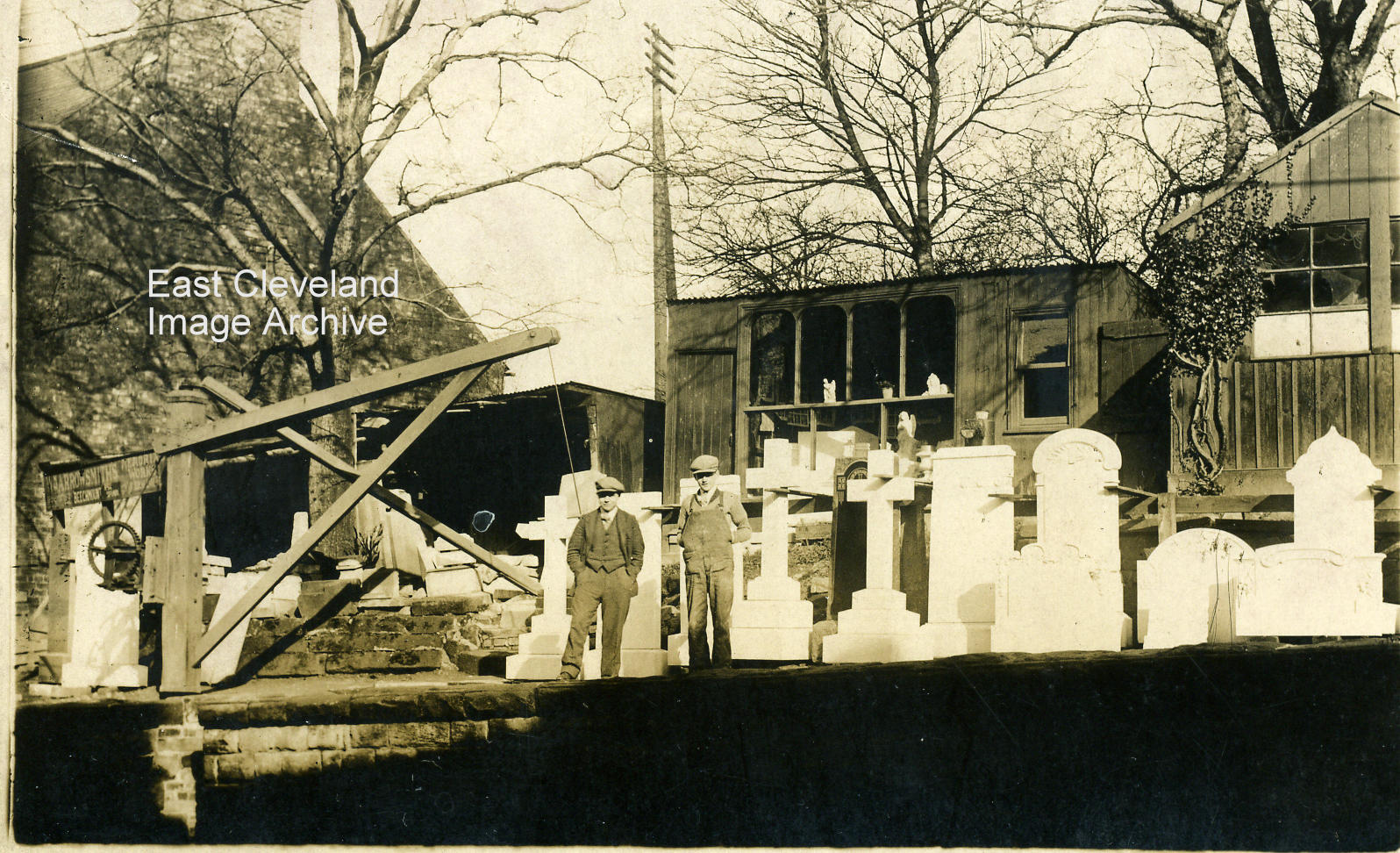 Taken in the mid to late 1920s this view of the mason’s yard shows Edgar Colbeck (on right) who was apprenticed to William Arrowsmith. 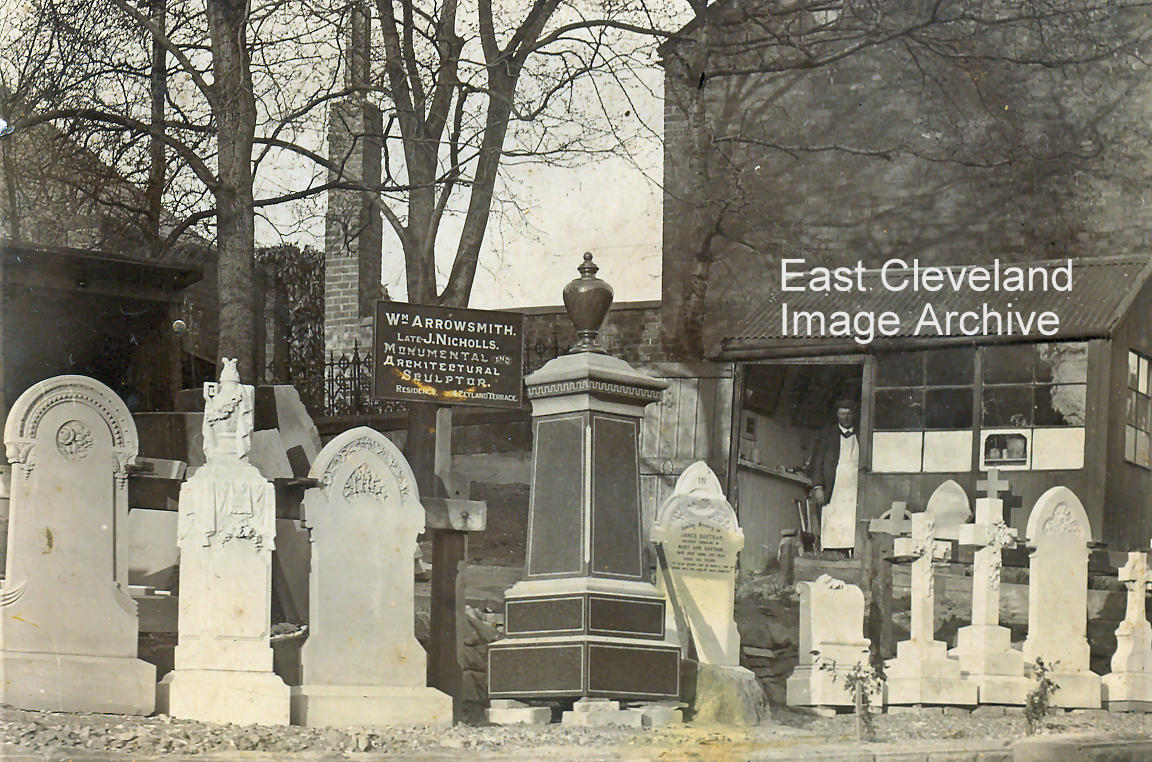 This picture of the monumental masons yard on Zetland Road is from the earliest period when William Arrowsmith was the proprietor. Date is unknown although the headstones are of a late Victorian style so possibly from the early years of the 20th century. Researches have now provided an answer for the magnificent red granite headstone in the foreground; it can be now found in Loftus Cemetery, dedicated to Mary Ann Brittain (1825 – 1906) wife of William B. Brittain (1820 – 1910). Mr and Mrs Brittain in 1901 were living at 37 West Road, Loftus; Mr Brittain was a retired Ironmonger. 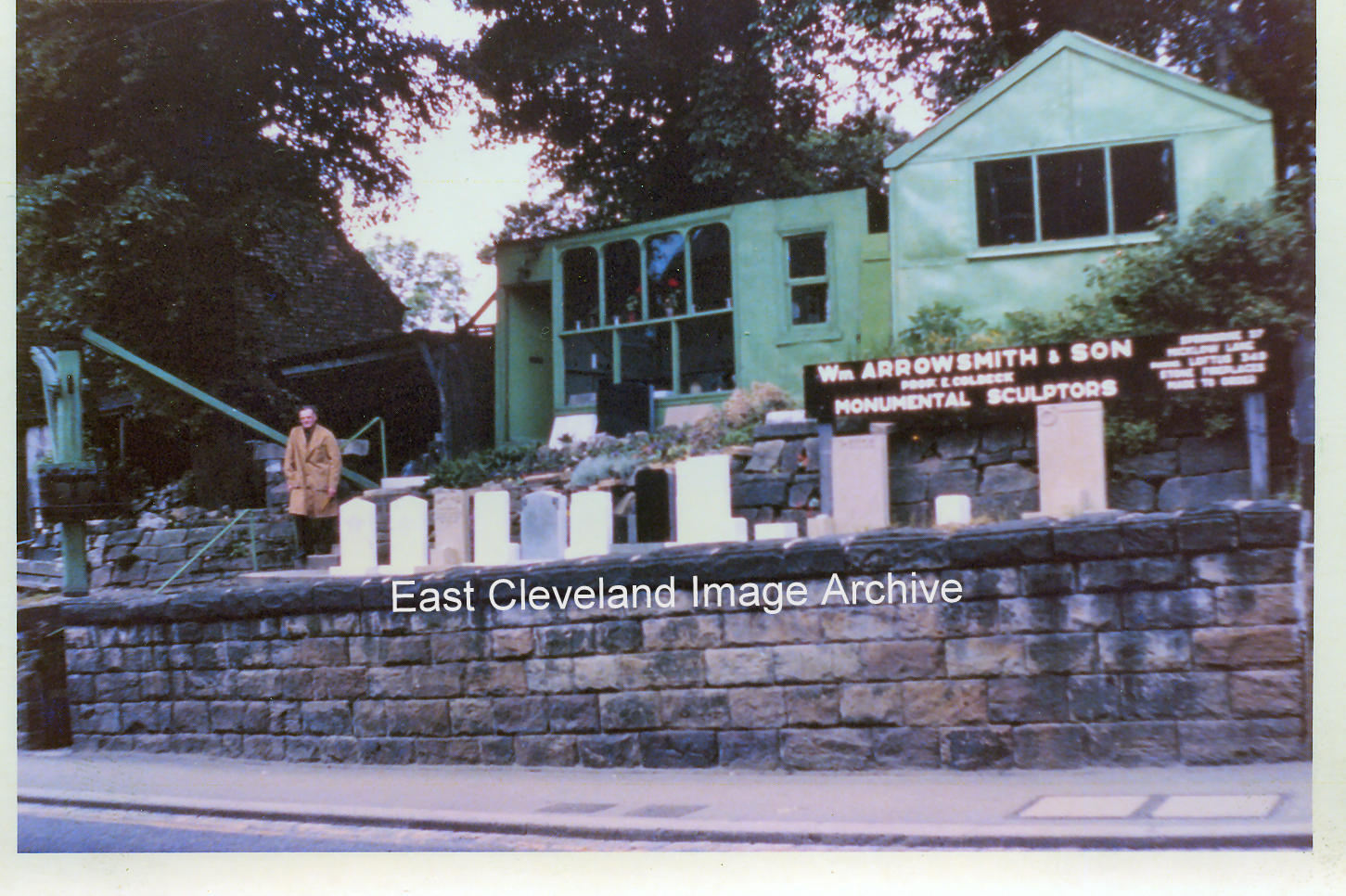 This view of Arrowsmiths yard taken in 1971 shows Edgar Colbeck, he became proprietor in 1968 after working for John Arrowsmith (son of William) for several years.
Despite the battered condition (as it arrived to the Archive!) this delightful postcard with selected views of Loftus and area by T. C. Booth is still delightful. The residents of Loftus must have been very proud of their area to have such delightful postcards available. 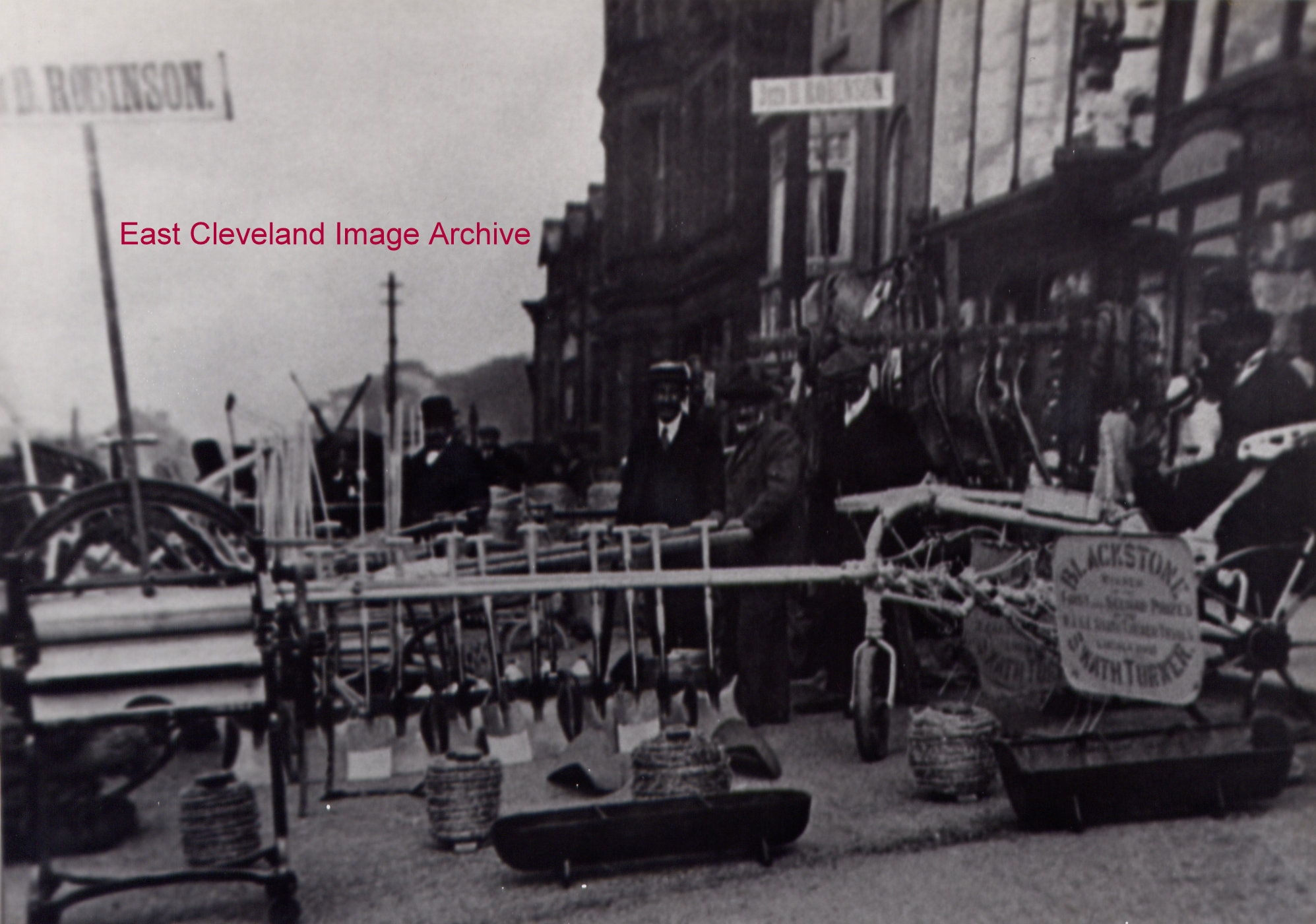 Another image of the Loftus Wool Fair in the same year of at least two others on the site. Based upon some of the coats that onlookers are wearing the weather was not dis-similar these present June days! Image courtesy of the Pem Holliday Collection. |
||
Recent Comments